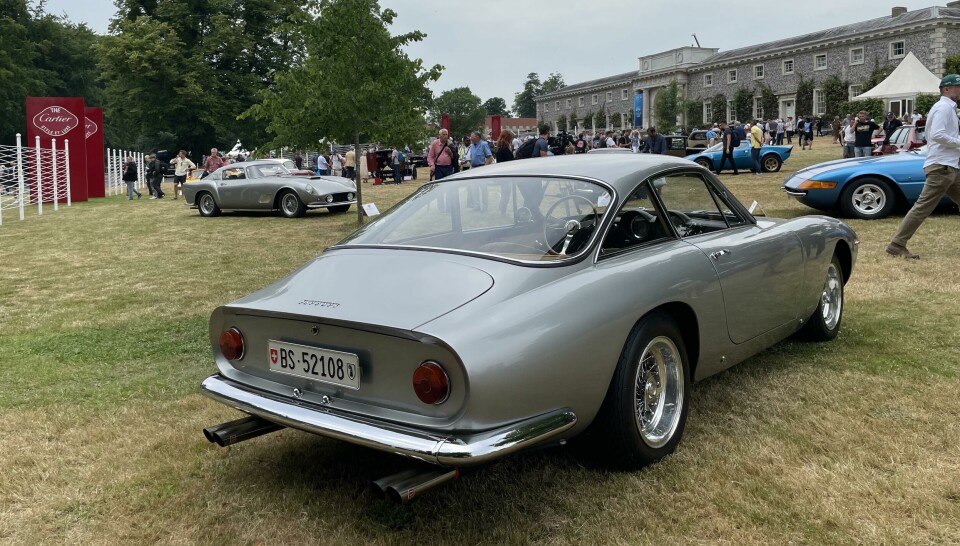
Review: Cartier does it right at Goodwood 2022
The Cartier lawn at the Goodwood Festival of Speed is always a treat for classic car enthusiasts, with stunning examples on show from Bugatti, Ferrari, Fiat, Lancia and Lotus to name but a few
Hot on the heels of CDN editor James McLachlan’s main 2022 Goodwood Festival of Speed report, here’s our break-out review of Cartier’s Style et Luxe exhibit. As a design-led, classic rare-groove road car exhibition, it’s right up our street – or in this case well-kept lawn. Discerning and perfectly-curated, its selection of vehicles is always superb, diverse and above all, rare as hen’s teeth. On that basis, it never fails to impress. Here is our favourite baker’s dozen…
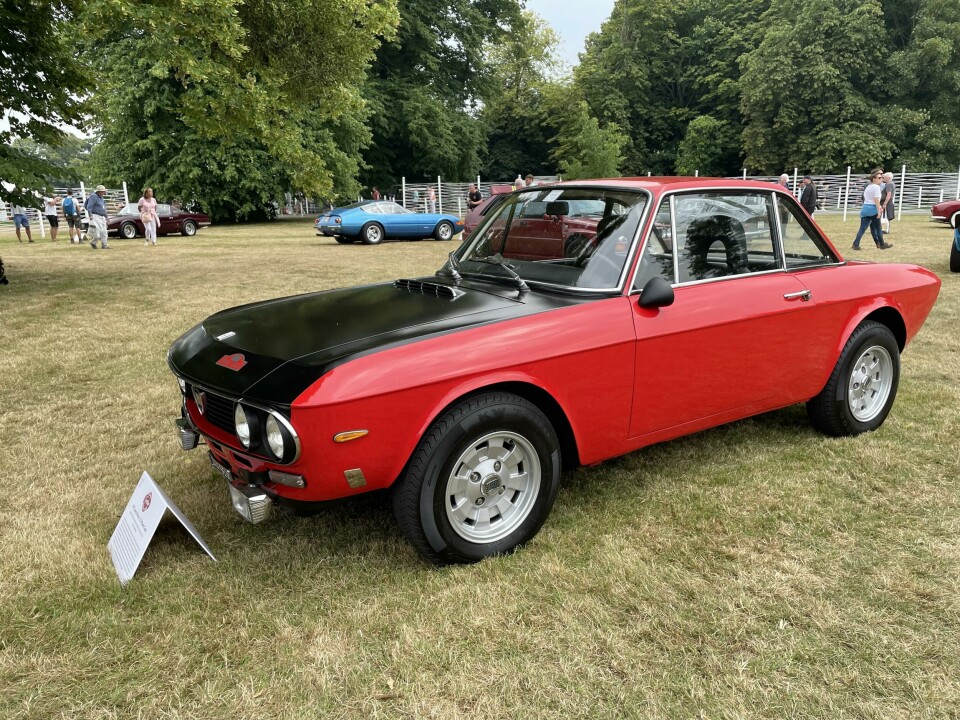
If you want to see great Lancias from the 70s and 80s up close, the “Mud, sweat and tears – Lancia’s homologation greats” section of the Cartier lawn is a great place to spend time. The 1972 Lancia Fulvia 1.3 S Monte Carlo was the first model to capture our attention and of course it’s not any old Fulvia, but a limited edition released to celebrate (and capitalise on) Sandro Munari’s 1972 victory in the Monte Carlo rally. Painted black-and-red two-tone to match his Works rally car livery, with bumpers removed and square fog lights added, the end result is pleasingly pared back too.
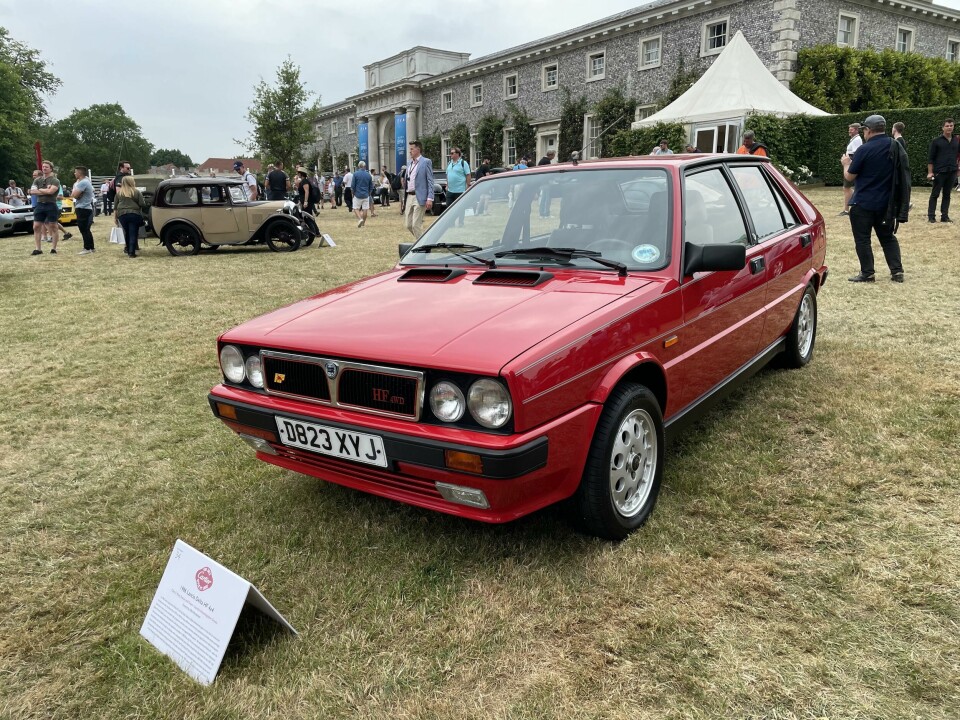
Just to the right of the Fulvia was a mid-80s version of the classic Delta HF 4x4. The Lancia Delta won six consecutive World Rally Championship (WRC) manufacturer titles from 1987-1992 and this particular rally homologation model was a road-going 4x4 version, which was developed by Abarth into the 1987 rally car which won the first, with Juha Kankkunen taking the drivers’ title. The famous Delta Integrale that followed ‘integrated’ the developments from this 1987-wining season into both road and rally cars.
3. 1974 Lancia Stratos HF Stradale
It’s hard to find new superlatives for this wonderful Gandini-designed Bertone body, but despite seeing many examples of the Stratos HF Stradale at many classic car concours, each new encounter is still a delight. Gandini just wanted it to look good, as he told me when I was lucky enough to interview him many moons ago: “I just wanted to make a car that attracted people regardless of whether it won races,” he said with a smile. “There is a risk that a racing car might not win so what’s the point of it? But if it’s aesthetically appealing and doesn’t win, it’s still an appealing car.”
As it turned out, Gandini need not have worried, as the Stratos dominated the World Rally Championships in the mid-70s, possibly assisted by its wraparound windscreen design enabling drivers to see through corners while drifting sideways. Only 492 were made – Lancia was supposed to build 500 for homologation purposes – but each one encountered is still a magical experience.
4. 1967 Ferrari 330 GT Coupé by Michelotti
This one-off by Michelotti is what the Cartier Goodwood lawn is all about: rarity. Making its debut on British soil (literally), this unique car was the happy result of an unhappy accident with a Ferrari 330 2+2. US Ferrari importer sent the damaged car back to Carrozzeria Michelotti in Italy to be re-bodied, as the V12 engine and mechanicals were fine, and it was then transformed into a two-seater coupé with a roomier interior cabin and more luggage space, made possible due to its original longer 2+2 platform. Stunning.
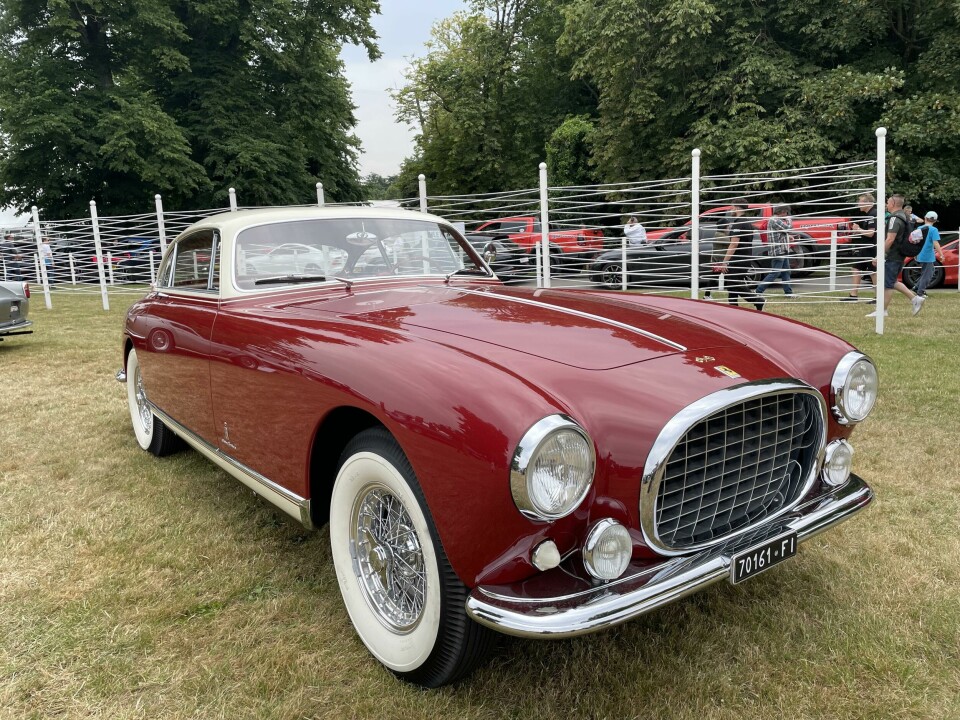
White wheels and higher proportions are not Ferrari nor Pininfarina design staples, which marks this vehicle out as an early collaboration between the two companies. The first to carry the famous 250 series name, the 250 Europa was Ferrari’s first true grand touring model built for the road (not the track). This particular model was the fourth of only 21 Europa cars built. Rare, fresh and still Ferrari.
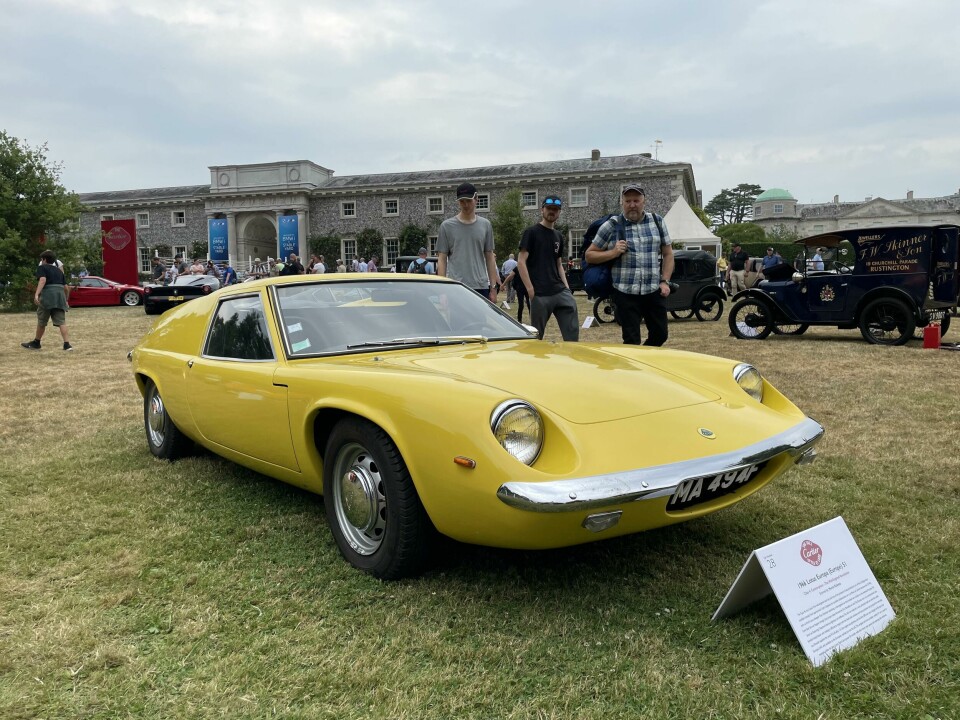
The roots of this fabulous car go back to a sketch for a mid-engined Ford V8-powered Lotus by Ron Hickman, who would later make his fortune designing the general purpose workbench for Black & Decker called Workmate. Practical rather than beautiful, the Workmate has since sold more than 30 million units worldwide, while Lotus only sold 9887 Europas. All of which helps explain why this car – an example of the earlier S1 Europe-badged model with higher rear side panels – found its way on to the Cartier lawn, and the Black & Decker Workmate did not.

Odd-ball, and slightly less glamorous designs are also welcome on the Cartier lawn, but they must have good provenance, a good story and be rare. The 1964 René Bonnet Djet is just such a vehicle, boasting the distinction of being the world’s first production road-going mid-engined sportscar. Launched under the brand name of Le Mans driver and engineer René Bonnet, only 198 examples were made and this is the only right-hand drive example.
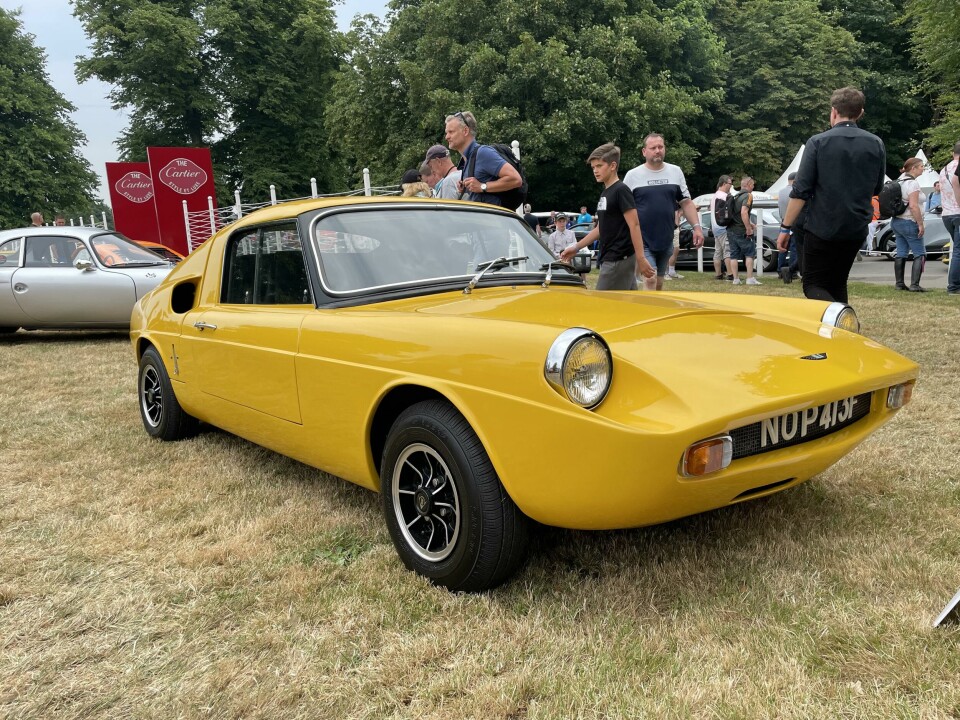
Another curious entrant in the mid-engined section of the 2022 Cartier line-up, this 1967 Unipower GT British sportscar was launched in 1966 but was conceived as early as 1961 by Ernie Unger with a tubular chassis and fibre glass body. Input by designers Val Dare-Bryan in 1962 – following a chance meeting, appropriately at Goodwood – and then Ron Bradshaw, who had been working on the Ford GT40 project, resulted in this delightful car, also unusual for its door sill-mounted gear lever. Only 73 examples were built.
9. 1989 Ferrari F40
Much more obvious, but still hard to ignore, the F40 cannot be described as elegant, but its almost brutalist design by Leonardo Fioravanti at Pininfarina still expresses the power of its 3.0-litre V8 twin-turbo underpinnings fantastically. It was also the last car to be personally overseen by the brand’s founder Enzo Ferrari before his death in 1988. A healthy (for Ferrari) 1315 units were made.
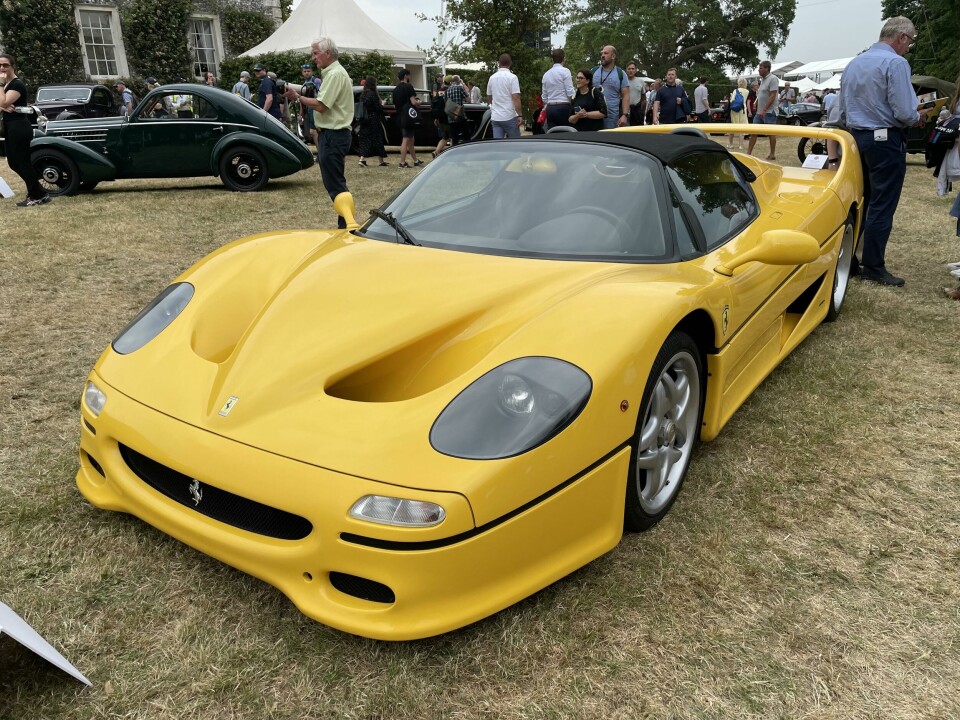
Reflecting the more fluid design trends of the 90s and the F40’s successor, the F50 was created by Lorenzo Ramaciotti and Pietro Camardella, again at Pininfarina. Note the inspiration from the 1989 Ferrari Mythos concept too [and see CDN’s recent Pininfarina Top Ten aero designs story for comparison].
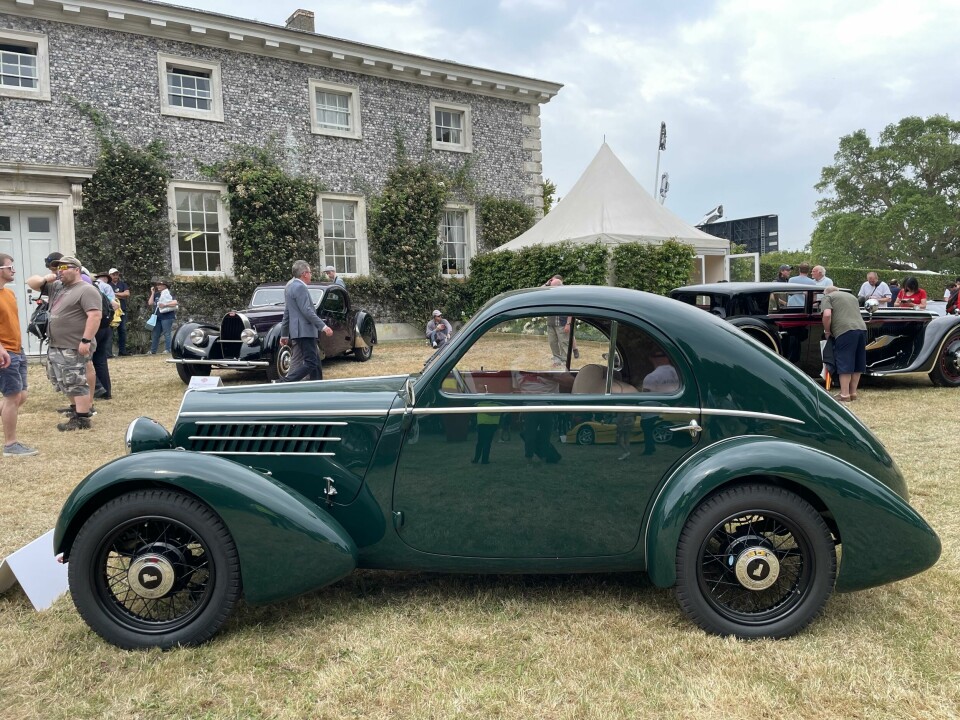
Small and perfectly formed, this two-seater coupé is an exotic variant of the Fiat 508 Balilla ‘people’s car’. It was designed by the influential Mario Revelli di Beaumont, who was at the time working for Stabilimenti Farina, Pinin Farina and Fiat. A dinky pint-pot delight.
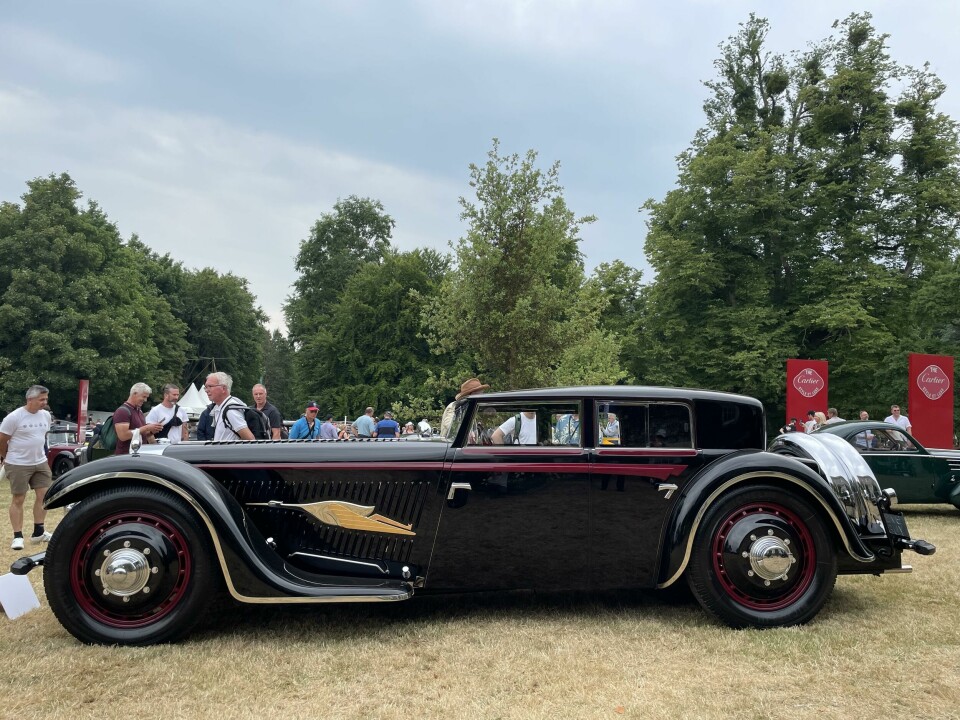
Paul-Albert Bucciali was a French maker of magnificent prototypes with front-wheel drive. His sixth exhibited here is the TAV8-32, based on a Mercedes-Benz Type S with a whopping 3.7m wheelbase which in 1932 gained a 5.0-litre Voisin V12 engine and Saoutchik Art Deco style bodywork, called ‘Fleche d’Or’ (or Golden Arrow in English). The proportions are unbelievable up close, and still unbelievably good to gaze upon, despite being 90 years old.
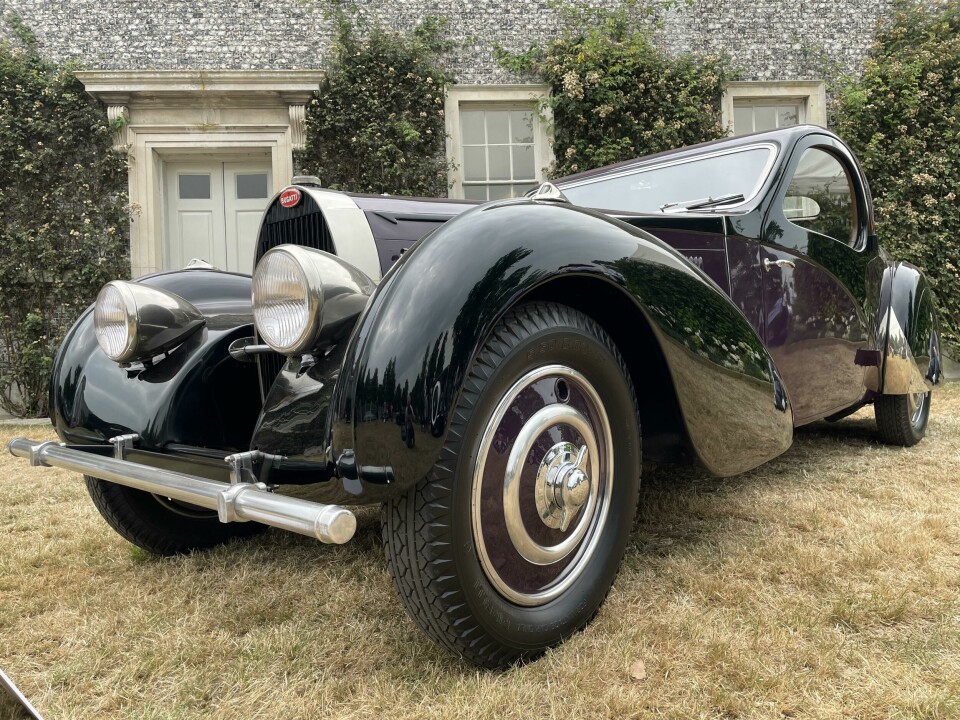
If you’ve visited a few high-end classic car shows, Bugatti Type 57s do tend to feature – 710 were made between 1934 and 1940 – but this specific vehicle is one of only 41 made with the Atalante style body and has a supercharger fitted which makes it rarer still. As its info caption sign states: “This car combines the most sought-after technical specification with the most beautiful body design.” That’s how it makes the cut at Goodwood’s always exceptional Cartier Style et Luxe lawn.










